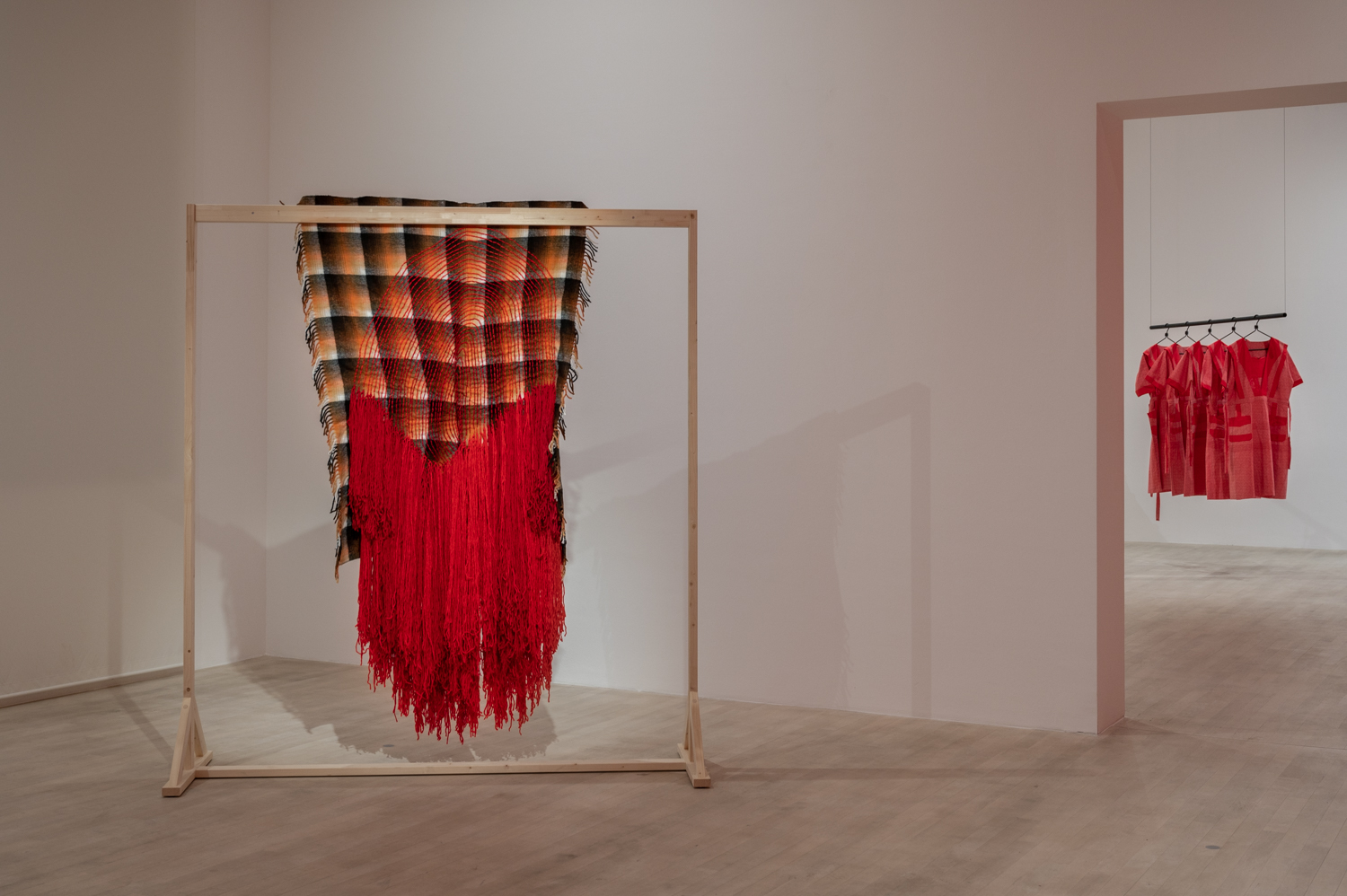
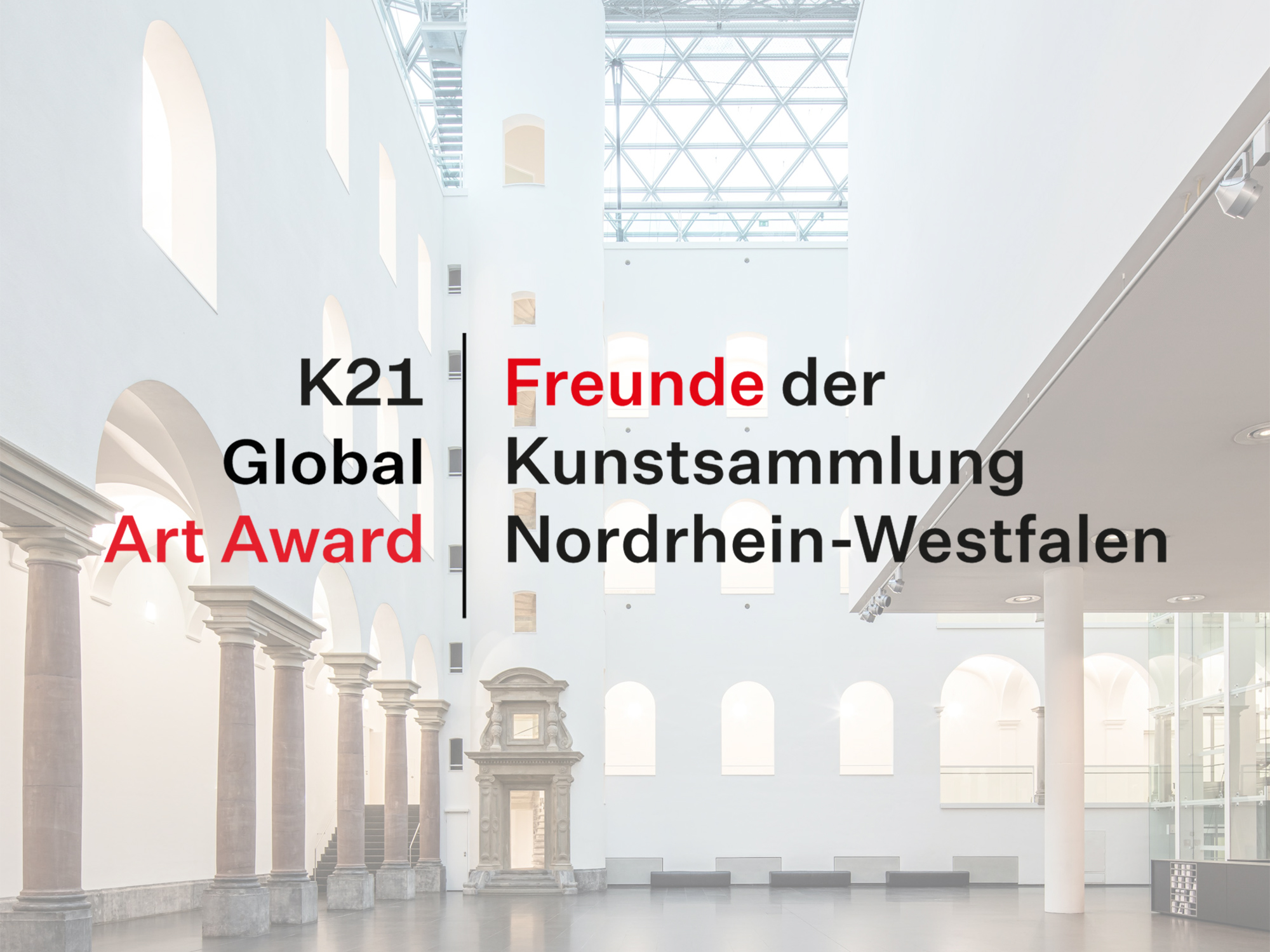
The Freunde der Kunstsammlung (Friends of K20 K21), in cooperation with the Kunstsammlung Nordrhein-Westfalen (K20 K21) and thanks to a generous financial support from the Reydan + Roger Weiss Foundation award the new annual art prize “K21 Global Art Award”. It is an example of the creative and sustained approach of the Friends in supporting the endeavours of the Kunstsammlung.
The annual K21 Global Art Award celebrates the vision and courage of emerging and mid career artists. It will be offered to internationally recognized artists, aged 45 and under. The award highlights the museum’s mission to broaden the collection and acquires new work by artist from different regions in the world.
The K21 is dedicated to current developments in international contemporary art and features paintings, drawings, immersive installations, video works and multidisciplinary approaches by renowned contemporary artists from all regions, including Ed Atkins, Lutz Bacher, Cao Fei, Hito Steyerl, Raqs Media Collective, and Ai Weiwei. Beyond presenting its collection and staging groundbreaking international exhibitions, the museum engages in critical debates with diverse communities and is eager to broaden the understanding of art and culture. K21 is committed to ongoing reflection on its role in the light of global transformations and emerging challenges. With a focus on its collection, the museum aims to enrich and broaden its holdings by integrating the principles of polyphony, globality, and digitalization.
The K21 Global Art Award has a nomination jury of five renowned museum directors and curators from across the world. The nomination jury consists of Doryun Chong (M+, Hong Kong); Koyo Kouoh (Zeitz Museum of Contemporary Art Africa, Capetown); Omar Kholeif (Sharjah Art Foundation, Government of Sharjah, UAE); Oluremi C. Onabanjo, The Museum of Modern Art, New York); and Jochen Volz (Pinacoteca de São Paulo).
Each Jury Member has been invited to nominate up to two artists. This list of artists will be submitted to the acquisition jury, who selects the winning artist. The acquisition jury members for the 2024 K21 Global Art Award are Kathrin Bentele (Director, Kunstverein für die Rheinlande und Westfalen, Düsseldorf), Leopold Frhr. von Diergardt (Chairman, Friends of K20 K21), Anna-Alexandra Pfau (Board Member, Friends of K20 K21), Heidi Khair (Young Member, Friends of K20 K21) and Jonas Schmitt (Young Member, Friends of K20 K21).
The Friends of K20 K21 will acquire works of art by the selected artist. The works of art will then be given to the museum’s collection on permanent loan. The board will announce the winner.
This year, the Friends of the Kunstsammlung are acquiring the video installation “The Second Interrogation” (2022) by Wang Tuo. The work will be on permanent loan to the Kunstsammlung Nordrhein-Westfalen and will be exhibited in two rooms in K21 from May 24, 2024. With an acqusition budget of € 100,000, the K21 Global Art Award holds a special significance. It is unique in its global approach and is one of the most generously endowed art prizes in Germany. In 2023, the prize was awarded for the first time to the artist Senzeni Mthwakazi Marasela (*1977 in Thokoza, South Africa).
K21 Global Art Award 2024
Wang Tuo
Prize winner
2024
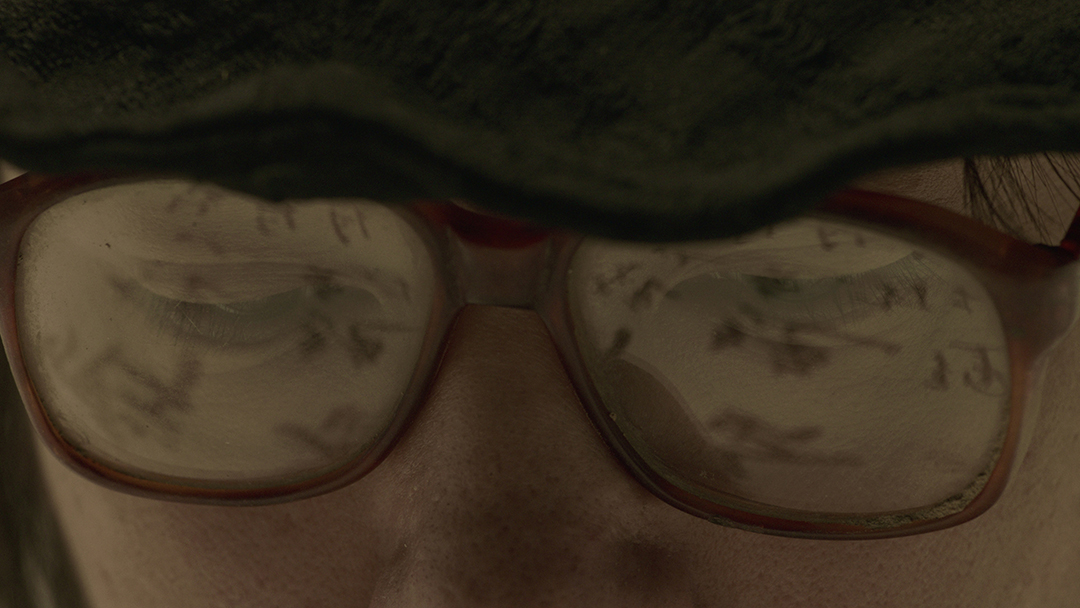
Acquisition Jury
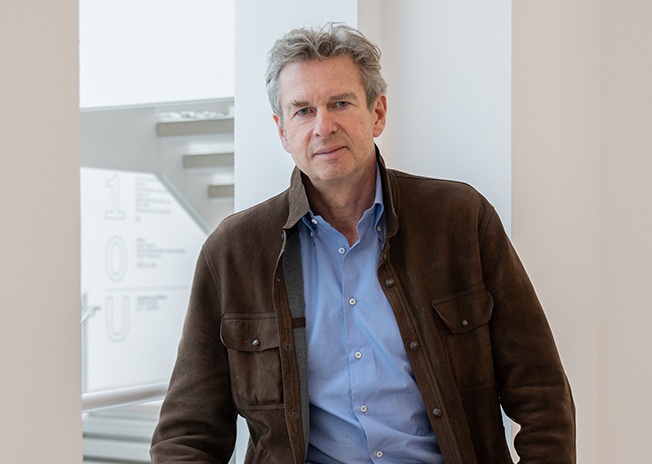
- Leopold Freiherr von Diergardt
- Chairman
- Freunde der Kunstsammlung
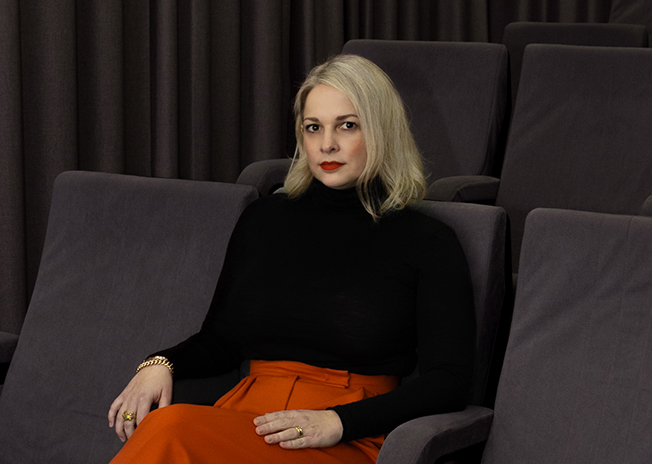
- Anna-Alexandra Pfau
- Advisory Board Member
- Freunde der Kunstsammlung
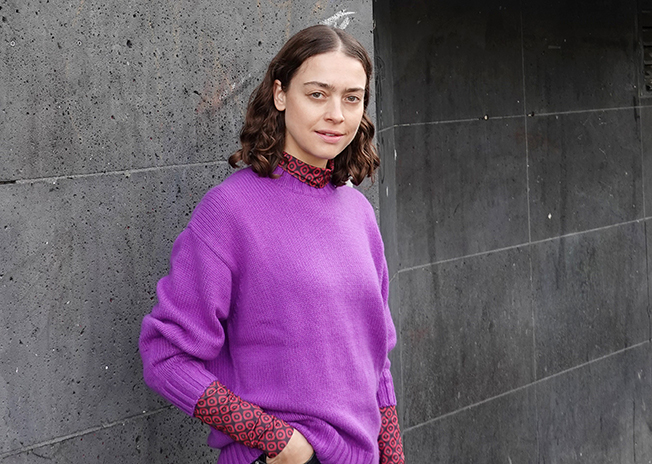
- Kathrin Bentele
- Head of
- für die Rheinlande und Westfalen
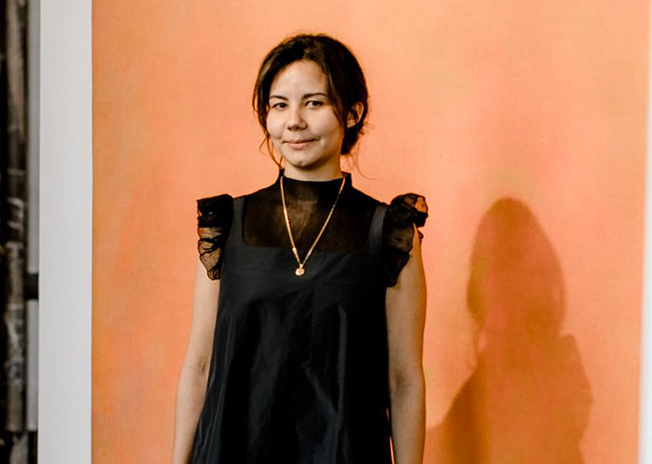
- Heidi Khair
- Young Member
- Freunde der Kunstsammlung

- Jonas Schmitt
- Young Member
- Freunde der Kunstsammlung
Nomination Jury
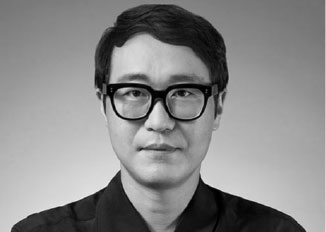
- Doryun Chong
- M+
- Hong Kong
Doryun Chong is Deputy Director and Curatorial and Chief Curator of M+, a new museum of visual culture that opened its Herzog & de Meuron–designed building in 2021 in Hong Kong’s West Kowloon Cultural District. Appointed as the inaugural Chief Curator in 2013, Chong oversees all curatorial activities and programs, including acquisitions, exhibitions, learning and public programs, and digital initiatives encompassing the museum’s three main disciplinary areas of design and architecture, moving image, and visual art. Some of the exhibitions he has curated or co-curated at M+ include “Mobile M+: Live Art” (2015), “Tsang Kin-Wah: The Infinite Nothing, Hong Kong in Venice” (2015), “Samson Young: Songs for Disaster Relief World Tour” (2018), “Noguchi for Danh Vo: Counterpoint” (2018), and “Yayoi Kusama: 1945 to Now” (2022). Prior to joining M+, Chong worked in various curatorial capacities at the Walker Art Center in Minneapolis (2003–2009) and The Museum of Modern Art, New York (2009–2013).
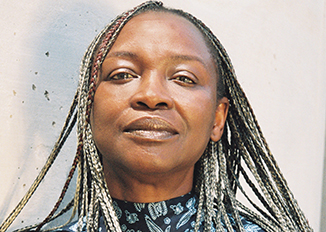
- Koyo Kouoh
- Zeitz MOCAA
- Cape Town
Koyo Kouoh has been Executive Director and Chief Curator of the Zeitz Museum of Contemporary Art Africa (Zeitz MOCAA) in Cape Town, South Africa, since May 2019. Prior to this appointment, she was the founding Artistic Director of RAW Material Company, a centre for art, knowledge, and society in Dakar, Senegal. She has organized meaningful and timely exhibitions such as “Body Talk: Feminism, Sexuality and the Body in the Works of Six African Women Artists”, first shown at Wiels in Brussels, Belgium in 2015. She curated “Still (the) Barbarians”, the 37th EVA International, the Ireland Biennial in Limerick in 2016 and participated in the 57th Carnegie International in Pittsburgh, Pennsylvania, United States, with the deeply researched exhibition project “Dig Where You Stand” (2018), a show within a show, drawn from the collections of the Carnegie Museums of Art and Natural History. She was the initiator of the research project “Saving Bruce Lee: African and Arab Cinema in the Era of Soviet Cultural Diplomacy”, co-curated with Rasha Salti at the Garage Museum of Contemporary Art in Moscow, Russia, and the Haus der Kulturen der Welt in Berlin, Germany (2015 – 2018). Active in the critical field of the arts community in a pan-African and international scope, Kouoh has a remarkable list of publications under her name, including “When We See Us: A Century of Black Figuration in Painting” (2022); “Shooting Down Babylon” (2022), the first monograph on the work of the South African artist Tracey Rose; “Breathing out School: RAW Académie” (2021); “Condition Report on Art History in Africa” (2020); “Word!Word?Word! Issa Samb and The Undecipherable Form” (2013); and “Condition Report on Building Art Institutions in Africa” (2012), to name a few. She has served as Curator of the Educational and Artistic Programme of 1:54 Contemporary African Art Fair in London, United Kingdom and New York, United States (2013 – 2017), as well as on the curatorial teams for documenta 12 (2007) and dOCUMENTA (13) (2012). Kouoh is the recipient of the Grand Prix Meret Oppenheim 2020, the Swiss Grand Award for Art that honors achievements in the fields of art, architecture, critique and exhibitions. During her tenure at Zeitz MOCAA, her curatorial work has focused on in-depth solo exhibitions of African and African-descent artists. As such, she has organised exhibitions with Otobong Nkanga, Johannes Phokela, Senzeni Marasela, Abdoulaye Konate and Tracey Rose. She lives and works between Cape Town, South Africa; Dakar, Senegal; and Basel, Switzerland.
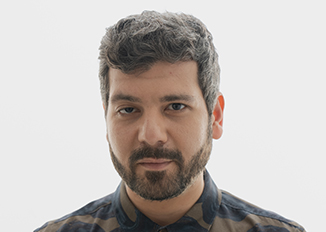
- Omar Kholeif
- Sharjah Art Foundation
- United Arab Emirates
Professor Dr. Omar Kholeif CF FRSA is an author, historian, and curator. They have worked as an artist, broadcaster, filmmaker, editor, publisher, and museum director. Over the last two decades, their work has concentrated on the evolving nature of networked image culture in relation to intersectional questions emerging in the field and study of ethnicity, race, and gender. Their research has come to life in over 70 exhibitions, and in 40 authored, co-authored, and/or edited books, which have been translated into 16 languages. Dr. Kholeif currently serves as Director of Collections and Senior Curator, Sharjah Art Foundation, UAE, Visiting Professor at MIMA School of Arts and Creative Industries, Teesside University and Director of artPost21, a not-for-profit agency that supports culture from the margins. Their monograph, Internet_Art: “From the Birth of the Web to the Rise of NFTs” was published by Phaidon in 2023 becoming a non-fiction hardback bestseller. Forthcoming books include “Helen Khal: Gallery One and Beirut in the 1960s” and “Magda Stawarska (imagine/otherwise)” with Lubaina Himid.
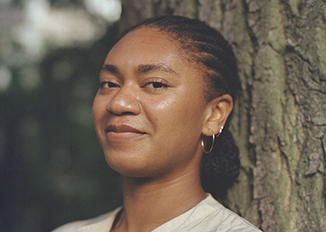
- Oluremi C. Onabanjo
- Museum of Modern Art
- New York
Oluremi C. Onabanjo is The Peter Schub Curator in the Department of Photography at the Museum of Modern Art, where she is co-chair of the Early Modern Working Group and deeply involved in the ongoing reinstallation program of the Museum’s collection. Onabanjo is the 2022 recipient of the Cisneros Institute Curatorial Research Grant and a core member of the C-MAP Africa Research Group. Recent exhibitions include “Projects: Ming Smith” (2023) and “New Photography 2023” (2023). Previously, Onabanjo worked as Director of Exhibitions and Collections of The Walther Collection and served on the curatorial team of the 8th Triennial of Photography Hamburg. She lectures internationally on photography and curatorial practice, and her writing appears in The New Yorker, Revista ZUM, Tate Etc alongside publications by The Art Institute of Chicago, RISD Museum, and The Studio Museum in Harlem, amongst others. A 2020 Andy Warhol Foundation Arts Writers Grantee, Onabanjo is the author of “Ming Smith: Invisible Man, Somewhere Everywhere” (2023) and the editor of “Marilyn Nance: Last Day in Lagos” (2022).
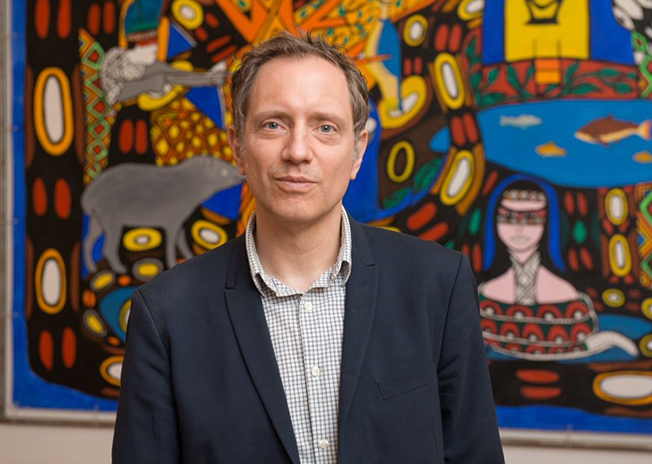
- Jochen Volz
- Pinacoteca de São Paulo
- São Paolo
Jochen Volz is the General Director of Pinacoteca de São Paulo. He was the curator of the Brazilian Pavilion at the 57th Biennale di Venezia (2017) and was the chief curator of the 32nd Bienal de São Paulo (2016). Between 2012 and 2015 he was Head of Programmes at the Serpentine Galleries in London. Prior, he was a curator at the Instituto Inhotim, Minas Gerais, since 2004, where he has served as General Director between 2005 and 2007 and Artistic Director between 2007 and 2012. In 2009, he organized “Fare Mondi / Making Worlds”, the international section of the 53rd International Venice Biennale together with Daniel Birnbaum. In 2006, he guest curated for the 27th São Paulo Biennial. Between 2001 and 2004, he was curator of Portikus Frankfurt am Main. As a critic he is writing for magazines and catalogues.
Nominees for the
K21 Global Art Award 2024
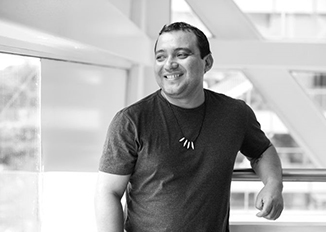
- Denilson Baniwa
- (*1984, Amazonas, Brasil), Niterói, Rio de Janeiro, Brazil
- nominated by Jochen Volz
Statement Jochen Volz: “Denilson Baniwa is an indigenous member of the Baniwa people, born in Barcelos, in the interior of the Amazon, and based in Niterói, in Rio de Janeiro. He works as an artist, curator, educator, activist and articulator of digital and indigenous cultures and rights. As a visual artist, he has received several awards, held several residencies inside and outside of Brazil, and has exhibited at many institutions around the globe, including the Museu Afro Brasil, MASP, MAR, the Bienal de Sidney, and the Getty Research Institute in Los Angeles. At Pinacoteca de São Paulo, as part of the exhibition Véxoa: Nós sabemos (2020, Baniwa contributed the work Nothing that is golden remains 1: Hilo, which consisted of planting and cultivating a garden in part of the parking lot of the museum. This work unfolded in the presentation of the Escola Panapaná in the Octógono of the Pinacoteca in 2023.
One of the most prominent artists of his generation, Denilson Baniwa’s practice proposes a reworking of the idea of the archive as a pedagogical tool for reflection. From his early works, which intervene in engravings produced in the context of the colonization of the Americas, to his most recent works, which are installation-based and participatory, Baniwa intrudes upon the archive with the aim of stressing and weakening the accelerated time of conquest and colonization and bringing forth the time of reflection, waiting, and listening. Having followed Denilson’s production for several years, I strongly believe that he is one of the most groundbreaking artists of our time, and of a decolonial discussion. His most recent paintings, as the one currently presented at the 35th Bienal de São Paulo and in his recent solo exhibition in his gallery, A Gentil Carioca, make an incredible synthesis between indigenous imagery and graphics and his deep interest in the Western history of art.”
Born in Barcelos, in the interior of Amazonas, Denilson Baniwa is a native of the Baniwa people. He currently lives and works in Niterói, Rio de Janeiro. As well as being a visual artist, Denilson is an activist for indigenous rights and an organizer of cultural actions aimed at reconstructing the imagery of these peoples in Brazil.
In 2023, he took part in the 35th São Paulo Biennial - “Choreographies of the impossible” and the first edition of the Amazon Biennial. In the same year, he occupied the octagon of the Pinacoteca de São Paulo with the installation “Escola Panapaná” and presented the solo show “Moqueca de Maridos” at A Gentil Carioca in São Paulo.
In 2022, he presented his first solo show at A Gentil Carioca, “Frontera”, and curated the exhibition “Nakoada” at the Museum of Modern Art in Rio de Janeiro (MAM-RJ). In 2021, he presented the solo show “Inípo - Caminho da Transformação” at the Goethe Institute in Porto Alegre.
In 2021 he was one of the artists selected by the jury of the Pipa Award, which he also won in the online category in 2019. In 2018, he held the exhibition “Terra Brasilis: o agro não é pop!”, at the Art Gallery of the Fluminense Federal University (UFF), in Niterói, as part of the project “Brasil: A Margem”, promoted by the institution. In the same year, he took part in the artistic residency of the fourth edition of the Corpus Urbis Festival, held in Oiapoque, Amapá. He has participated in exhibitions at the Banco do Brasil Cultural Center (CCBB), the Pinacoteca de São Paulo, the São Paulo Cultural Center (CCSP), the Hélio Oiticica Arts Center, the Afro Brasil Museum, the São Paulo Art Museum (MASP), the Rio Art Museum (MAR) and the Sydney Biennale.
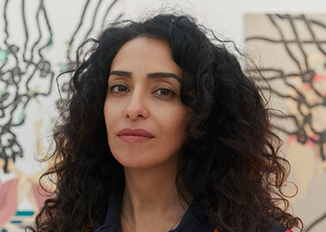
- Hayv Kahraman
- (*1981, Baghdad), Los Angeles, USA
- nominated by Omar Kholeif
Statement Omar Kholeif: “I have followed Hayv Kahraman’s work since her first presentation as a practicing artist in 2005. I now believe that she is making the greatest work of her career—art that transcends and moves the soul. Having left Iraq as a Kurdish refugee at age 11 and moving to Sweden, Kahraman’s life has been one of constant free-fall—a life that she has articulated as being suspended somewhere between the persistent threat of “life or death.” Kahraman made a name for herself working and exhibiting across Asia between 2008 and 2015. Her reclamation of the Orientalist painting style so often associated with imperial views of the so-called ‘other’ are recast in Kahraman’s hands and made manifest through her avatar whom she calls, She. This female figure has sought to address stereotypes and concealed violence against women that has been concealed in history painting. However, it was not until the sudden death of the artist’s mother during the Covid-19 pandemic that I believe that Hayv Kahraman’s work took the most incredible, visceral, and visual turn. With her body of work, “Gut Feelings” (2020-2023), Kahraman unspooled and disemboweled the trauma of her lived female experience as a refugee and as a victim of domestic violence—linking these experiences to broader debates around mental health and wellbeing. There was a newfound fervor and urgency in her subject and painting style—works that constellate to form installations of incredible animism. Hayv from my understanding has barely exhibited in public institutions across Europe despite her esteemed recognition across Asia and parts of the United States, which is incredibly disappointing. Her current evocations of her lived experience are often breathtaking and awe-inspiring. I believe that Kahraman could potentially work with K21 to potentially produce a site-specific work were she to be awarded the prize.”
Hayv Kahraman is a Kurdish-Iraqi artist whose work primarily deals with the gendered and racialized body politics of migrant consciousness. A vocabulary of narrative, gender fluidity, and dynamics of non-fixity found in diasporic cultures are the essence of her visual language and the product of her experience as an Iraqi refugee/come émigré. Through her work Kahraman explores the body as methodology to complicate normative perceptions of what it means to be human today.
Recent and forthcoming exhibitions include: “Look Me in the Eyes”, ICA SF, San Fransisco (2024); “Look Me in the Eyes”, Frye Art Museum, Seattle (2024); “The Foreign in Us”, Moody Center for the Arts, Houston, Texas (2024); “Ten Thousand Suns”, Sydney Biennale 2024, Sydney (2024); “The inescapable interweaving of all lives”, Kunsthalle Düsseldorf, Düsseldorf (2023); “O Quilombismo”, Haus der Kulturen der Welt, Berlin, Germany (2023); “In the Heart of Another Country: The Diasporic Imagination” in the Sharjah Art Foundation Collection, Deichtorhallen Hamburg (2022); “The Touch of Otherness”, SCAD Museum of Art, Savannah, GA (2022); “Gut Feelings”, The Mosaic Rooms, London, UK (2022);” Our whole, unruly selves”, San José Museum of Art, San José (2021); “Reflections: Contemporary Art of the Middle East and North Africa”, British Museum, London (2021); “Blurred Bodies”, San José Museum of Art, San José (2021); “New Time: Art and Feminisms in the 21st Century”, Berkeley Art Museum, Berkeley (2021); Henry Art Gallery, Seattle, WA (2019); ICA Boston (2019); and MASS MoCA, North Adams, MA (2019).
Kahraman’s work is in several important international collections including the British Museum, London, UK; Museum of Contemporary Art, San Diego, California, US; Los Angeles County Museum of Art (LACMA), California, US; Birmingham Museum of Art, Alabama, US; The Rubell Family Collection, Florida, US; The Barjeel Art Foundation Sharjah, UAE; MATHAF: Arab Museum of Modern Art Doha, Qatar; Pizzuti Collection of Columbus Museum of Art, Ohio, US; North Carolina Museum of Art, Raleigh, US; Pérez Art Museum Miami, Miami, US.
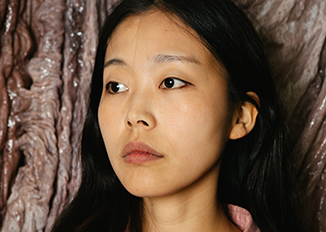
- Mire Lee
- (*1988, South Korea), Seoul, South Korea /Amsterdam, Netherlands
- nominated by Doryun Chong
Statement Doryun Chong: “Mire Lee received her BA in sculpture and MA in media art from the Department of Sculpture at the College of Fine Arts, Seoul National University (2013). She gained significant attention with her two-person exhibition with the late Swiss Surrealist artist HR Giger at Schinkel Pavillon in Berlin (2021) and her contribution of a major sculptural installation in the Arsenale section of the main exhibition of the 59th Venice Biennale (2022), “The Milk of Dreams”. These were followed by her acclaimed participations in the 58th Carnegie International and the Busan Biennale of the same year. She also had solo projects at MMK in Frankfurt am Main (2022) and the New Museum in New York (2023). Lee is known for her sculptures and kinetic installations notable for their disturbingly visceral and bodily qualities as well as their awe-inspiring scales. Using off-the-shelf, homespun materials such as low-tech motors, PVC hoses, and metal pipes, combined with chains and towels, she fills and covers them with materials such as clay and unsculptable matters like silicone and oil, creating constantly mutable forms that are at once impactfully organic, familiar, and precarious. Collapsing humour and horror, allure and repulsion, among other binaries. Lee’s work also challenges boundaries of the self, social acceptability, and conventions of aesthetics and desires. Suspended between the ambiguous zone of machine and viscera, Lee’s work suggests precarious boundaries of the reality, fantasies, reality, and desire that are being defined at present”
Mire Lee’s works defy categorization, yet they are idiosyncratic, exuding energy that is entropic and full of polarizing, enticing and nauseating sentiments. Unsightly yet inexplicably sensational, Lee’s work challenges notions of selfhood, social acceptability, and cleanliness; obliterating societal conventions of aesthetics and desire in the face of her orgasmic, transgressive and kinetic technologies. Towels, chains, clay, silicon hoses, and steel structures coalesce to form an organism that is haptic, primordial, and yet highly mechanized.
In works like „Carriers”, tentacular appendages amidst a milky rain of glycerin activate a sense of deeply personal indiscretion within the viewer, their projections of vorarephilia functioning as an emblem of solidarity with the increasingly suffocating realities of the anthropocene, consequences of a carnal, insatiable desire for power. Her sculptural vocabulary, between the realms of machinery and viscera, inhabits an ambiguous, eclectic environment, free of inhibitions yet entirely cognizant of the unspoken boundaries at play.
Mire Lee lives and works between Seoul, South Korea and Amsterdam, Netherlands.
Lee’s work was also featured in several group exhibitions including presentations at Kunstverein Freiburg, (2021), Antenna Space, Shanghai (2020), the 15th Biennale de Lyon (2019), Sharjah Art Foundation (2019), Art Sonje, Seoul (2019), and the 12th Gwangju Biennale Pavilion Project (2018). Additionally, she has taken part in residencies at the Rijksakademie van beeldende kunsten, Amsterdam (2018); Seoul Museum of Art (SeMA Nanji Residency) (2017), and was a recipient of the Special Prize at the 2021 Future Generation Art Prize.
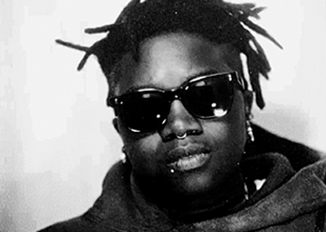
- Tiona Nekkia McClodden
- (*1981, Blytheville, USA), Philadelphia, USA
- nominated by Koyo Kouoh
Tiona Nekkia McClodden takes an interdisciplinary approach as a visual artist, filmmaker and curator to interrogate ideas of ritual and order through its relationship to identity and the conditions of being human. Traversing documentary film, experimental video, sculpture, sound installation and poetry, her practice explores themes of Black interiority, biomythography and queer poetics.
She currently has work on view in the group exhibitions Juan Francisco Elso: Por America at MoCA North Miami and ‘Going Dark: The Contemporary Figure at the Edge of Visibility’ at the Guggenheim in New York (2023–24). Her works have shown in major exhibition and biennials, including her pivotal solo exhibition at Kunsthalle Basel (2023), titled ‘THE POETICS OF BEAUTY WILL INEVITABLY RESORT TO THE MOST BASE PLEADINGS AND OTHER WILES IN ORDER TO SECURE ITS RELEASE’; ‘Juan Francisco Elso: Por America’ at Phoenix Art Museum, Arizona (2023) and El Museo del Barrio in New York (2022–23); Prospect 5, New Orleans, Louisiana (2021–22); Haus der Kulturen der Welt (HKW), Berlin (2019); ‘New Grit: Art & Philly Now’ at the Philadelphia Museum of Art, PA (2021); ‘Play Me Home’ at the Baltimore Museum of Art in 2023; and Owkui Enwezor’s ‘Grief and Grievance: Art and Mourning in America’ at New Museum, New York (2021).
In recent years, McClodden has won prestigious grants and fellowships, including the Warhol Foundation Arts Writers Grant (2022), Princeton Arts Fellowship (2021–23); the Bucksbaum Award, Whitney Museum of American Art (2019); Guggenheim Fellowship in Fine Arts (2019); the Louis Comfort Tiffany Award (2017); and the Pew Fellowship (2016).
Work by McClodden is in the permanent collections of the Baltimore Museum of Art, Maryland; MoMA, New York; Philadelphia Museum of Art, Philadelphia, PA; and the Rennie Collection Museum, Vancouver.
Her writing has been featured on the Triple Canopy platform, in Artforum, Frieze Magazine, Cultured Magazine, ART 21 Magazine, and many other publications. She is the founder and director of the Philadelphia-based Conceptual Fade, a micro-gallery and library space focused on Black thought and artistic production.
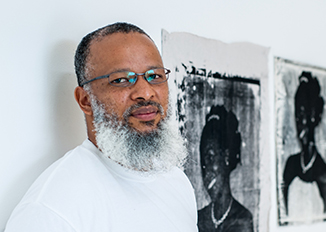
- Meleko Mokgosi
- (*1981, Botswana), New York, USA
- nominated by Omar Kholeif
Statement Omar Kholeif: “I was first introduced to Mokgosi’s work via a partner at Stevenson Gallery in 2012. However, it was not until I visited Bead, Butter & Power, Mokgosi’s solo exhibition at the Fowler Museum at UCLA in Los Angeles that the complexity, thoughtfulness, and rigor of Mokgosi’s work came into full view. Raised by a single mother, what I found particularly striking in this exhibition, which in my mind sought to recast the entire genre of history painting, was the vulnerable, tender detail afforded to Black female subjects. Archetype and stereotype here are recast into unfolding scenes produced across epic multi-panel paintings that reveal the significance of our communal “mothers” and their role in shaping society and popular history. Ebullient colors are accompanied by hand painted texts, often revealing stories that have been vanquished from history or official record. Sense, sensuality, and class are also explored, alongside an education in democracy. Moving between Botswana and then onto South Africa, Mokgosi’s work negotiates the everyday realities of African colonialism, and the subsequent decolonization processes that took place throughout his childhood. Technically, he is a master of color and form, which is perhaps why Mokgosi is now an Associate Professor and Director of the MFA programme at Yale University—one of the most prestigious painting universities of the world. Despite widespread interest across the United States for Mokgosi’s work, his presence in Europe is seemingly negligible in comparison. It would thus make critical sense that K21 seriously consider him as a candidate for the K21 Global Art Award.”
Meleko Mokgosi is an artist, associate professor and Director of the Graduate Studies in Painting and Printmaking at the Yale School of Art, and co-founder and Director of the Interdisciplinary Art and Theory Program. His large-scale, figurative, and often text-based works engage history painting and cinematic tropes to explore historiography, democracy, and liberation movements across Africa and the diaspora.
Mokgosi received his BA from Williams College in 2007 and participated in the Whitney Museum of American Art’s Independent Study Program that same year. He received his MFA from the Interdisciplinary Studio Program at the University of California, Los Angeles (UCLA) in 2011 and was an artist-in-residence at the Studio Museum in Harlem in 2011–2012. His most recent body of work, Spaces of Subjection, explores subjection and subjectivity as they relate to perspectives on African, African American, and Black Life. This work was part of the solo exhibition “Currents 122” (2022) at the St. Louis Art Museum and the solo exhibition “Imaging Imaginations” (2023) at the Art Gallery of York University. His work has been exhibited both nationally and internationally, most recently with solo exhibitions at the St. Louis Art Museum, the Art Gallery of York University, the Pérez Art Museum Miami, the Williams College Museum of Art in Williamstown, the Rochester Contemporary Art Center and the University of Rochester’s Memorial Art Gallery, the Fowler Museum at UCLA, the Institute of Contemporary Art in Boston, the Savannah College of Art and Design Museum, the Carnegie Museum of Art in Pittsburg, the California African American Museum in Los Angeles, the Raleigh Contemporary Art Museum, the Goteborg International Biennial for Contemporary Art, and the 12th Biennale de Lyon.
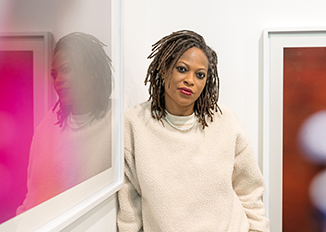
- Mame-Diarra Niang
- (*1982, Lyon), Paris, France
- nominated by Koyo Kouoh
Mame-Diarra Niang is a self-taught artist and photographer. Her work explores the concept of the “plasticity of territory.”
Niang’s first mid-career retrospective, “Self as a Forgotten Monument”, is currently on show at the Zeitz Museum of Contemporary Art Africa in Cape Town, South Africa. Previous solo exhibitions include “Sama Guent Guii” at Stevenson, Johannesburg (2022), “The Citadel: a trilogy | Call me when you get there” at Galeria Lume, São Paulo (2021), “Léthé”, as part of Rhe at Stevenson Amsterdam (2021), and “Call Me When You Get There” in Cape Town (2020). Niang has participated in numerous group exhibitions, including “UNBOUND: PERFORMANCE AS RUPTURE”, Julia Stoschek Foundation, Berlin (2023-2024); “Glitch The Art of Interference”, Pinakothek der Moderne, Munich (2023-2024); “Sharjah Biennial 15: Thinking Historically in the Present” (2023); “Currency: 8th Triennial of Photography Hamburg” (2022), “DAK’ART OFF”, 14th Dakar Biennale, Senegal (2022); “Shifting Dialogues: Photography from The Walther Collection”, Kunstsammlung Nordrhein-Westfalen (2022); “Affective Affinities”, the 33rd Bienal de São Paulo (2018); and “Strange Attractors”, a curatorial publication project launched at the 10th Berlin Biennale (2018). Her first artist book, The Citadel: a trilogy, was released by Mack Publishers in 2022 as a three-volume edition, articulating her “personal but analytic relationship with place.”
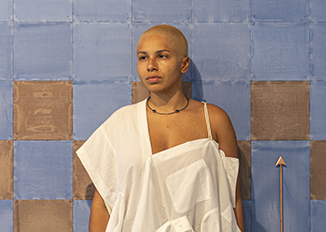
- Luana Vitra
- (*1995,Belo Horizonte, Brazil), Durban, South Africa / Contagem, Brasil
- nominated by Jochen Volz
Statement Jochen Volz: “Luana Vitra was born and raised in the state of Minas Gerais, in a region known for its monumental natural landscapes, which is also profoundly marked by industrial mining activities. Therefore, she has always experienced the different possible manifestations of iron and soot and her practice investigates the psycho-emotional dimension of landscapes. From compositions made with a wide range of materials, her objects and installations reconfigure universal symbols and elaborate others, especially invested in the qualities of matter, evoking poetry, discussing subjectivities, and raising political questions.
Luana Vitra’s artistic practice defies conventional boundaries, merging the ethereal with the earthly. Her multidisciplinary approach brings together elements of sculpture, performance, and immersive installations. Vitra’s works often explore the symbiotic relationship between humanity and nature, inviting viewers to contemplate their connection to the environment. I consider Luana Vitra one of the most outstanding new artistic positions from Brazil, and given her increasing insertion into an international circuit, I strongly recommend an acquisition of an installation of hers. There are interesting dialogues to works and installations from the Kunstsammlung NRW Collection, especially in the light of the legacy of Joseph Beuys.”
Her artistic practice, situated between carpentry (influenced by her father) and the use of words (influenced by her mother) is based on processes that recognize the physical qualities and subtle contours of matter, and investigate the psycho-emotional infusion of landscapes.
Her work has been presented in institutions such as the Museu de Arte Moderna do Rio de Janeiro, the South London Gallery; the Museu de Arte de São Paulo; the Javett Art Centre at the University of Pretoria; Framer Framed, Amsterdam; 35th Bienal de São Paulo and the Instituto Inhotim.
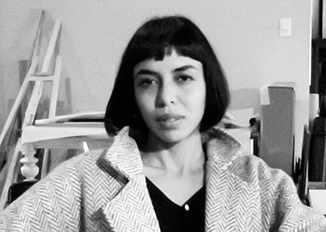
- Hajra Waheed
- (*1980), Yogyakarta, Indonesia / Montreal, Canada
- nominated by Oluremi C. Onabanjo
Statement Oluremi C. Onabanjo: “Hajra Waheed is a multidisciplinary artist whose practice engages the relationship between surveillance and the networks of power that structure human lives, while also addressing the alienation of displaced subjects affected by legacies of colonial and state violence. Her work is a sophisticated synthesis of abstraction and collective forms of authorship, harnessing the power of affective and sonic resonance to create unique installations. Her multichannel sound installation “Hum II” (2023) was a standout presentation at the Sharjah Biennial 15 (2023), which I would recommend for your consideration.”
Hajra Waheed’s multidisciplinary practice ranges from painting and drawing to video, sound, sculpture and installation. Amongst other issues, she explores the nexus between security, surveillance, and the covert networks of power that structure lives, while also addressing the traumas and alienation of displaced subjects affected by legacies of colonial and state violence. Characterized by a distinct visual language and unique poetic approach, her works often use the ordinary as a means to convey the profound, and landscape as a medium to transpose human struggle and a radical politics of resistance and resilience.
Recent and upcoming exhibitions worldwide include: Tai Kwun Contemporary, Hong Kong (2024); Fragmentos, Espacio de Arte y Memoria, Bogotá (2024); Haus der Kulturen der Welt, Berlin (2023); Sharjah Biennial 15 (2023); Contemporary Art Museum, St. Louis (2023); State of Concept, Athens (2023); PHI Foundation for Contemporary Art, Montreal (2021); Portikus, Frankfurt (2020); Centre Pompidou, Paris (2020); Lahore Biennial 02 (2020); British Museum, London (2019); The Power Plant, Toronto (2019); 57th Venice Biennale (2017); 11th Gwangju Biennale (2016); BALTIC Centre for Contemporary Art, Gateshead (2016); KW Institute for Contemporary Art, Berlin (2015); La Biennale de Montréal (2014); Herbert F. Johnson Museum of Art, New York (2012) and Fundació Antoni Tapies, Barcelona (2012).
Waheed is the recipient of the Sharjah Biennial 15 Prize (2023), the “Hnatyshyn Foundation Award” (2022), Victor Martyn Lynch-Staunton Award (2014) for outstanding achievement as a mid-career artist and a finalist for the “Sobey Art Award” (2016). Her works can be found in permanent collections including: the Museum of Modern Art, New York; British Museum, London; National Gallery of Canada, Ottawa; Centre Pompidou, Paris; Art Institute of Chicago; Burger Collection, Zurich/Hong Kong and Devi Art Foundation, New Delhi.
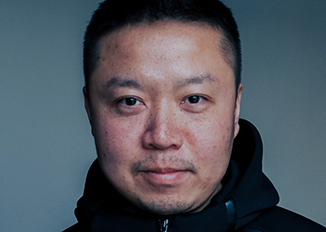
- Wang Tuo
- (*1984, Changchun, China), Beijing, China
- nominated by Doryun Chong
Statement Doryun Chong: “Born and raised in Changchun in northeastern China, Wang Tuo attained a bachelor’s degree in science and worked as a biologist in a lab for two years following graduation. He then decided to follow the footsteps of his grandfather, an ink painter, and his father, an oil painter, earning an MA in Painting at Tsinghua University in Beijing and an MFA at Boston University in the United States. He stayed in the US further from 2015 to 2017 as an artist in-residence at Queens Museum in New York. Now a well-established moving image artist, Wang has exhibited widely in Asia and the US as well as Europe. Wangs videos subvert linear storytelling in pursuit of fractured, multi-layered narratives. Reworking the conventions of popular cinema, literature, and theater, he creates fictionalized scenarios in realistic settings to convey the instability of identity, class, and relationships. Combining strategies of dramatization, documentary, and re-enactment, Wang challenges viewers’ habitual and often passive acceptance of media images by exposing hidden meanings, histories, and ideologies. In his early works, he mixed and destabilized relationships between live actions by hired actors based on his scripts with appropriated stories and lines from classic films such as “The Postman Always Rings Twice” (1981) and “Persona” (1966).
His recent work, the Sigg-award winning epic “The Northeast Tetralogy” (2018-2021), can be considered the first magnum opus of his early career. It comprises four moving image works that weave together different realities drawn from unofficial archives, modern history, myth, shamanic culture, and literature.
Most recently, Wang debuted to critical acclaim with his latest two-part film installation, “The Second Interrogation” (2022), which meditates on blurred lines of (self-) censorship, state power, and the social role of artistic practices in contemporary China around the storied historical exhibition, “China/Avant-Garde” of 1989. Wang’s continued and growing narrative and filmic investigation of the modern (art) history of China has distinguished him as the singularly bold and thoughtful artist of his generation.”
Wang Tuo weaves historical facts, cultural archives, fiction, and mythology into speculative narratives. Equating his practice to novel writing, he stages interventions in historical literary texts and cultural archives to formulate stories that blur the boundaries of time and space, fact and imagination. Through film, performance, painting, and drawing, the artist’s work is a powerful examination of modern Chinese and East Asian history. The multidimensional chronologies he constructs, interspersed with conspicuous and hidden clues, expose the underlying historical and cultural forces at work within society. Through historical inquiry, Wang’s often unsettling and dramatic works disentangle the collective unconscious and historical traumas. His more recent work critiques contemporary conditions of censorship, more specifically the tensions within the push and pull between artist and authority.
Wang has had recent solo exhibitions at the UCCA, Beijing; the Present Company, New York; the Salt Project, Beijing; and Taikang Space, Beijing, and recent group exhibitions at the M+ Museum, Hong Kong; the National Museum of Modern and Contemporary Art, Seoul; the Julia Stoschek Foundation, Düsseldorf; the Staatliche Kunsthalle Baden-Baden; the Queens Museum, New York; Kino der Kunst, Munich; the Zarya Center for Contemporary Art, Vladivostok; the Incheon Art Platform, Incheon; the Power Station of Art, Shanghai; OCAT, Shenzhen and Shanghai; the Times Museum, Guangzhou; and the National Taiwan Museum of Fine Arts, Taichung. He won the China Top Shorts Award and the Outstanding Art Exploration Award of the Beijing International Short Film Festival 2018. Wang is the winner of the Three Shadows Photography Award 2018 and the Youth Contemporary Art Wuzhen Award 2019. He was awarded a research residency at KADIST, San Francisco as part of the OCAT x KADIST Media Artist Prize 2020. In January 2024, he was awarded the Sigg Prize 2023 for his multi-channel installation “The Northeast Tetralogy” (2018–2021).
Curatorium
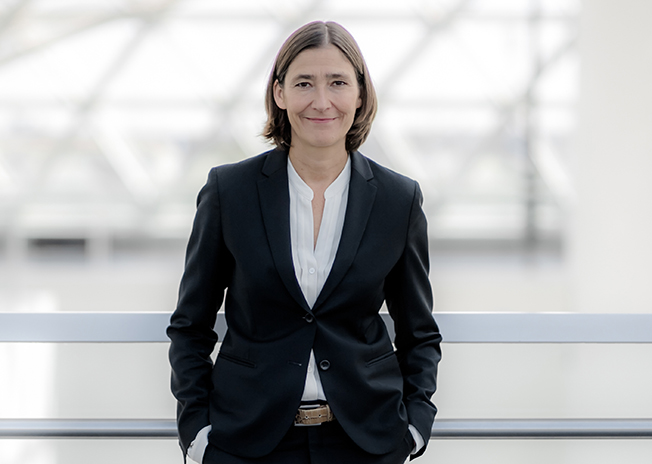
- Prof. Dr. Susanne Gaensheimer
- Director
- Kunstsammlung Nordrhein-Westfalen
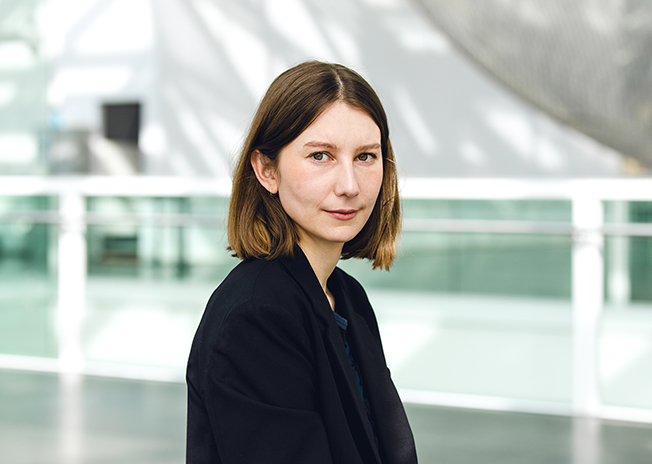
- Dr. Vivien Trommer
- Head of Collections
- Kunstsammlung Nordrhein-Westfalen

- Leopold Freiherr von Diergardt
- Chairman
- Freunde der Kunstsammlung

- Anna-Alexandra Pfau
- Advisory Board Member
- Freunde der Kunstsammlung
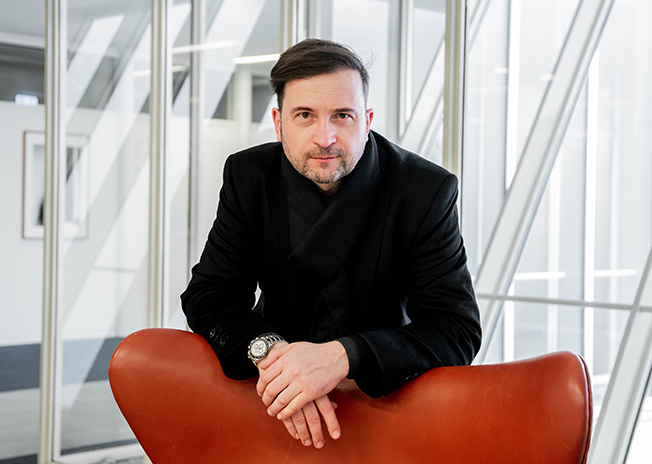
- Gabriel Sulkowski
- Board Member
- Freunde der Kunstsammlung
K21 Global Art Award 2023
Senzeni Marasela
Prize winner
2023
